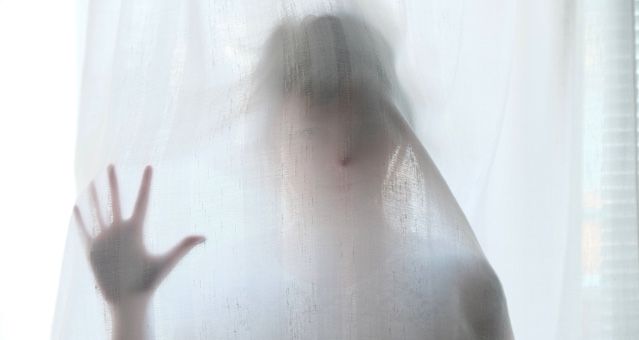
10 Terrifying Works of Literary Horror
This look at great literary horror is sponsored by Imaginary Friend by Stephen Chbosky.
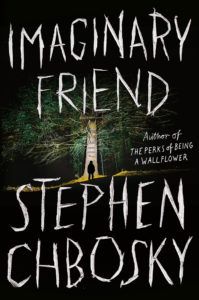
Single mother Kate and her son Christopher think they’ve finally found a place to settle down: the small community of Mill Grove. But then Christopher vanishes for six awful days. Finally Christopher emerges from the woods at the edge of town, unharmed but not unchanged. There’s a voice in his head only he can hear, with a mission only he can complete: Build a tree house in the woods by Christmas, or his mother and everyone in the town will never be the same.
If you define literary horror as horror with beautiful writing (which is how I am defining it), it is both easy and difficult to write a list of book recommendations. When I sat down to make this list, I got a few books in and very quickly realized my choices were all written prior to 1960, suggesting that there is no good modern literary horror, which could not be further from the truth! So I dug a little deeper. Here are ten works of literary horror, from 1818 to 2018, in chronological order by publication.
 Frankenstein by Mary Shelley
Frankenstein by Mary Shelley
Man creates monster. Monster has feelings. Man avoids monster.
The writing in this book is so beautiful that it’s easy to forget that it’s describing often frightening things. Try this Frankenstein quote on for size: “I collected bones from charnel houses; and disturbed, with profane fingers, the tremendous secrets of the human frame.”
 Dracula by Bram Stoker
Dracula by Bram Stoker
Vampire terrorizes nice British people.
Stoker somehow succeeded in making newspaper clippings, letters, and diary entries into literary art, and at the same time created a monster who would go on to star in over 200 major motion pictures. Not too shabby.
 Rebecca by Daphne Du Maurier
Rebecca by Daphne Du Maurier
Young girl marries widower and can’t live up to the memory of his first wife.
This is the classic gothic novel (uh, besides the previous two), and it’s a doozy. While perhaps less overtly frightening than some of the other books on this list, it uses language to paint a picture of isolation and setting that have rarely been matched.
“Last night I dreamed I went to Manderley again” endures as one of the most recognizable opening lines of all time for a reason.
 The Haunting of Hill House by Shirley Jackson
The Haunting of Hill House by Shirley Jackson
Eleanor goes to Hill House to determine whether it’s haunted, and she doesn’t want to leave.
If you even glanced at the byline on this post, you knew I was going to include some Shirley Jackson, right? This book once frightened me so badly that I stopped using the laundry room in my building (because it was definitely haunted) and instead carted my laundry to the laundromat (which was not haunted). I am currently rereading and YUP, still terrifying.
 The Youngest Doll by Rosario Ferré
The Youngest Doll by Rosario Ferré
Stories. Beautiful, creepy stories.
These stories blend magical realism and horror in a way that has stuck with me for over 20 years since I first read them in college. Crustaceans, familial relations, creepy eyeless dolls, patriarchy, colonialism, and so much more.
 Beloved by Toni Morrison
Beloved by Toni Morrison
Sethe is free from slavery but not from the memory of her baby, Beloved.
I am an absolute weenie and cannot bring myself to read any books about child harm/death. But I know from my other reading that Toni Morrison was an absolute master of language. Some argue that this book is not horror, but to them I give only the quickest narrowing of the eyes before moving on, because of course it is horror.
 A Head Full of Ghosts by Paul Tremblay
A Head Full of Ghosts by Paul Tremblay
A family turns an exorcism into a reality TV gig, and deals with the fallout.
I started reading this book recently (I am usually reading about 400 books at any given time) and the tone was somehow simultaneously so conversational and so literary that I double-checked on the internet to make sure it’s horror. (Could I have just looked at the cover? Perhaps.)
 The Changeling by Victor LaValle
The Changeling by Victor LaValle
Apollo loses his wife and son and tries to get them back.
See above, re: child harm weenie. I am, however, reading LaValle’s Shirley Jackson Award–winning novella The Ballad of Black Tom (see above, re: 400 books), and wow can he write a damn sentence.
 Her Body and Other Parties by Carmen Maria Machado
Her Body and Other Parties by Carmen Maria Machado
Stories, including a retelling of “The Girl With The Green Ribbon.”
This collection of short stories uses literary language to make modern stories feel absolutely timeless. The stories run the gamut of genres but all feel horrific, some more overtly than others. Often compared to Angela Carter’s The Bloody Chamber (a very reasonable comp!), to me this book feels the equal of The Youngest Doll.
 A Room Away From the Wolves by Nova Ren Suma
A Room Away From the Wolves by Nova Ren Suma
Bina runs away to Catherine House, where the residents may or may not be ghosts.
Nova’s style is more than a little bit surreal—especially in this book—but always so, so beautiful. This is another of my current-ish reads, and it’s more quietly haunting than outright frightening.



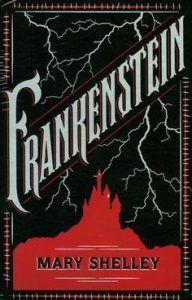 Frankenstein by Mary Shelley
Frankenstein by Mary Shelley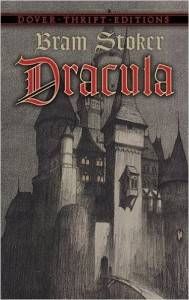 Dracula by Bram Stoker
Dracula by Bram Stoker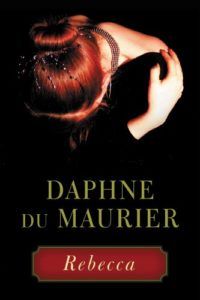 Rebecca by Daphne Du Maurier
Rebecca by Daphne Du Maurier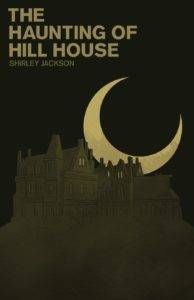 The Haunting of Hill House by Shirley Jackson
The Haunting of Hill House by Shirley Jackson The Youngest Doll by Rosario Ferré
The Youngest Doll by Rosario Ferré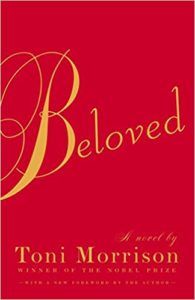 Beloved by Toni Morrison
Beloved by Toni Morrison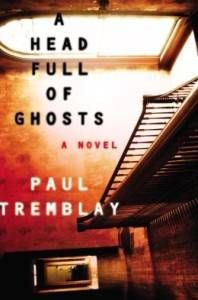 A Head Full of Ghosts by Paul Tremblay
A Head Full of Ghosts by Paul Tremblay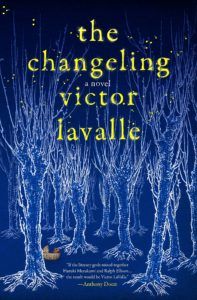 The Changeling by Victor LaValle
The Changeling by Victor LaValle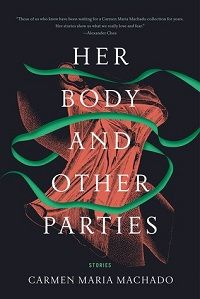 Her Body and Other Parties by Carmen Maria Machado
Her Body and Other Parties by Carmen Maria Machado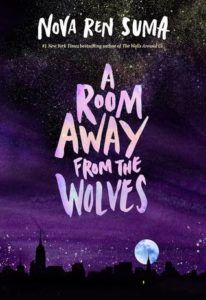 A Room Away From the Wolves by Nova Ren Suma
A Room Away From the Wolves by Nova Ren Suma




